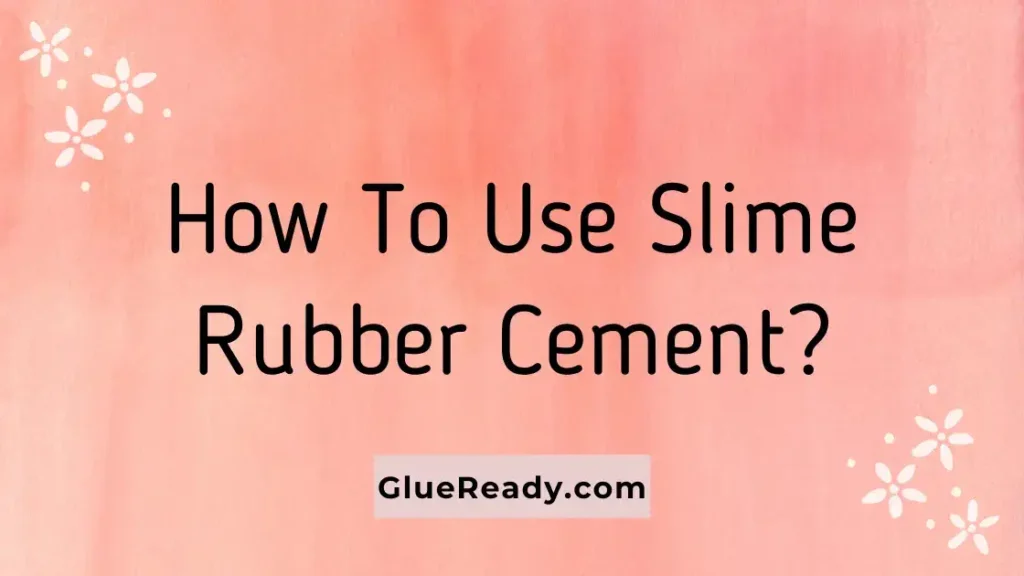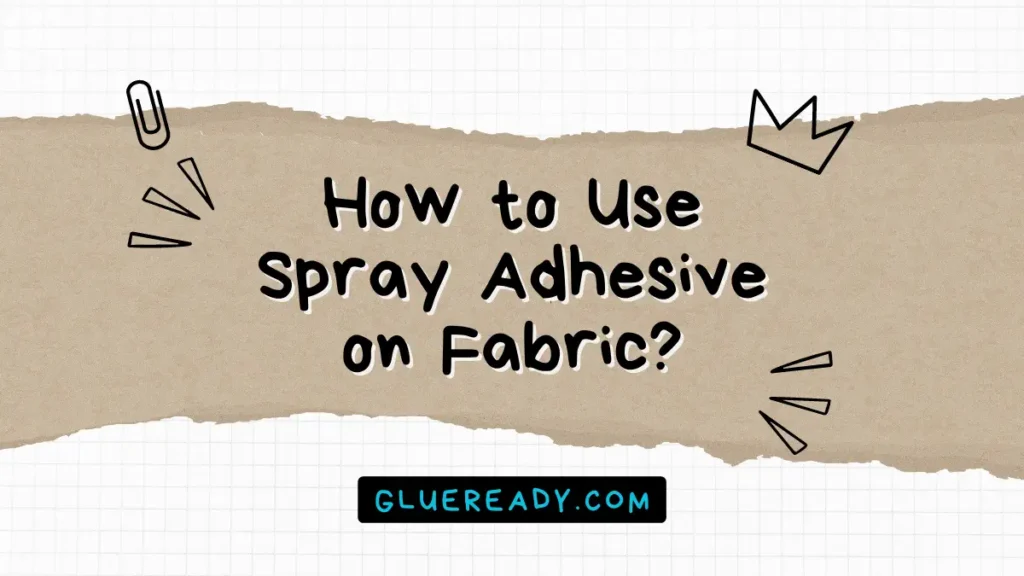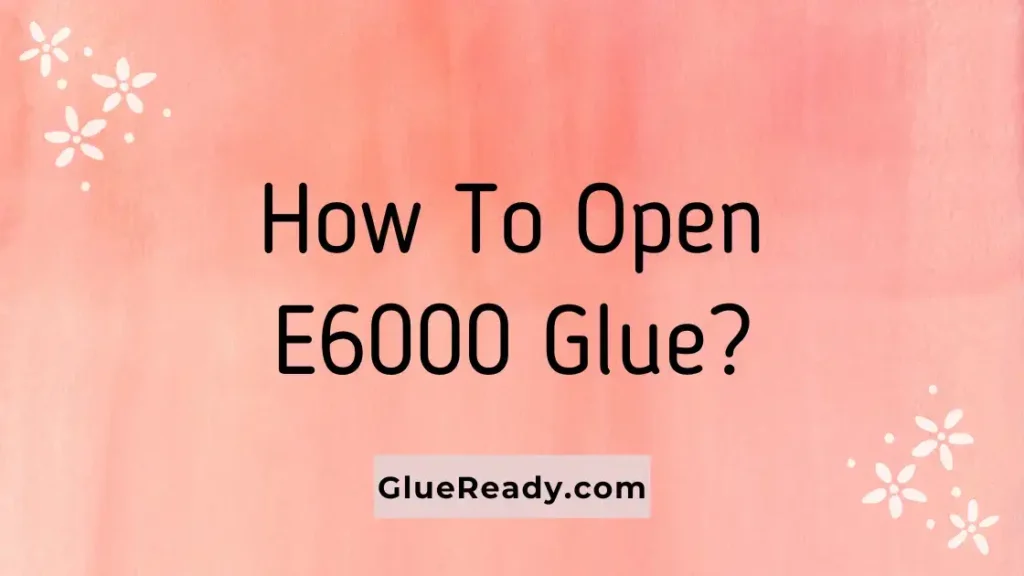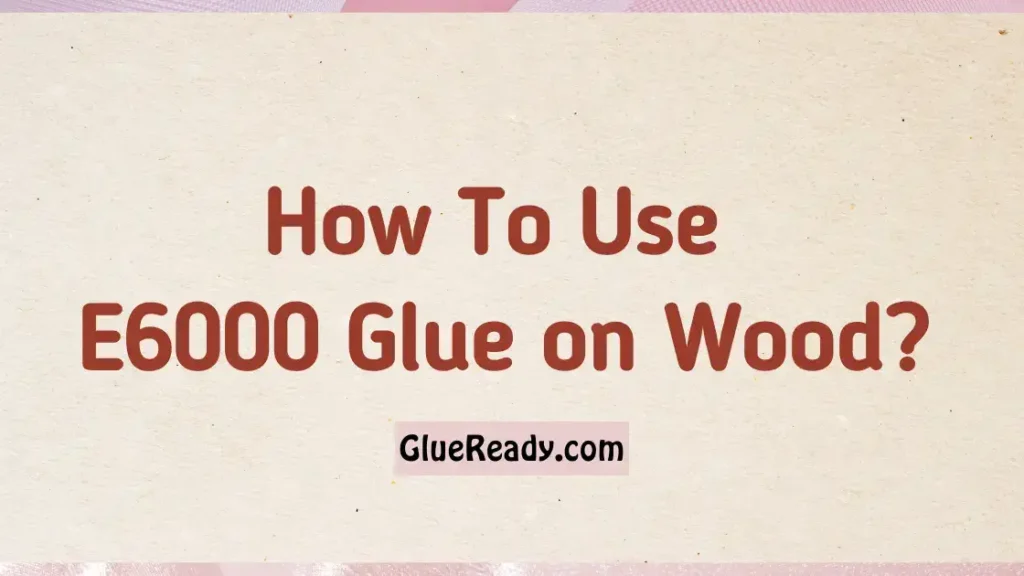How to Use E6000 Glue on Plastic?

E6000 glue is a popular and versatile adhesive that can bond a variety of materials, including plastic. Whether you want to repair a broken toy, a cracked vase, or a loose handle, E6000 glue can help you fix it.
But how to use E6000 glue on plastic? In this article, I will show you the steps to use E6000 glue on plastic and some tips to get the best results.
Read More: E6000 vs E6000 Plus
Does E6000 Glue Work on Plastic?
It is true that the E6000 glue works on plastic. It is heat, cold, and water-resistant and forms a tough, flexible bond. In order to get the best results, it’s essential to know how to use it.

Benefits of Using E6000 Glue on Plastic
Using E6000 glue on plastic provides several benefits:
- Strong Bond: This adhesive forms a robust bond on plastic, ensuring the joined pieces stay together under strain.
- Flexible Bond: This adhesive is flexible and can withstand vibrations, shocks, and temperature changes without cracking or breaking.
- Waterproof Bond: This adhesive is resistant to water and moisture, making it suitable for outdoor or indoor use.
- Clear Bond: This adhesive dries clear and does not leave any residue or discoloration on the plastic surfaces.
Tips for Using E6000 Glue on Plastic
Here are some tips to help you get the most out of your E6000 glue on plastic:
Work in a well-ventilated area
E6000 glue emits strong fumes and long-term inhalation of this substance can be harmful. Make sure you work in an area with good air circulation and avoid breathing in the fumes directly.
Wear gloves
E6000 glue can irritate your skin if it comes into contact with it. Wear gloves when handling the glue, and wash your hands thoroughly after use.
Test before use
If you are not sure how E6000 glue will react with your plastic material, do a small test on an inconspicuous area before applying it to your project. You will avoid any unexpected surprises or damage this way.
Store properly
To extend the shelf life of your E6000 glue, avoid direct sunlight and heat when storing it. Do not freeze or refrigerate your E6000 glue, as this can affect its performance.
How to Use E6000 Glue on Plastic Effectively?
E6000 is a popular industrial-strength adhesive that can be used on various materials, including plastic. When using E6000 glue on plastic, follow these steps for the best results:
Materials You’ll Need:
- E6000 glue
- Plastic surfaces to be bonded
- Clean cloth or alcohol wipes
- Disposable gloves (optional)
- Small applicator or toothpick (optional)
Step-By-Step Guide:
Ensure Optimal Surface Conditions
Before applying E6000 adhesive, make sure that the plastic surfaces you want to bond are free of any dirt, dust, or moisture that could compromise the adhesion. Use a mild detergent and a soft cloth to gently clean the surfaces without scratching the plastic. Then, let them dry thoroughly in the air.
Apply a Thin Layer of E6000 Glue
Squeeze the tube of E6000 glue lightly and spread a thin layer of glue on one of the plastic surfaces. Avoid applying too much glue, as it could cause spillage or prolong the drying time. A small amount of E6000 glue is sufficient to create a strong bond.

Replace the Cap Immediately
E6000 glue has a fast-drying property, so it is essential to replace the cap on the tube as soon as you finish applying the glue. This will prevent the glue from hardening inside the tube and clogging the nozzle.
Align and Press the Surfaces Together
After applying the glue, align the plastic pieces carefully and press them together with a firm but gentle force. The E6000 glue will form a durable bond, but it will not set instantly. You need to hold the pieces together for about 10-30 seconds to allow the initial bond (also known as ‘tack’) to form.
Remove Any Excess Glue
If any excess glue seeps out of the bond, you can remove it carefully with a cotton swab or a cloth moistened with a solvent like acetone. Be careful not to smear the glue over the surrounding surfaces.
Allow Sufficient Time for Curing
The most important part of using E6000 glue is allowing enough time for the glue to cure fully. Curing refers to the process where the glue hardens and reaches its maximum bonding strength. For E6000, it usually takes 24 to 72 hours for the adhesive to cure fully, depending on environmental conditions such as temperature and humidity. Do not move or disturb the bonded pieces during this period.
Safety Tips:
- Always work in a well-ventilated area when using E6000 glue, as it emits fumes during application.
- Avoid prolonged skin contact and use gloves if desired.
- Keep the glue away from children and pets.
- Read and follow the manufacturer’s instructions and warnings on the product label.
Some Alternatives of E6000 Glue for Plastic
If you are looking for alternatives to E6000 for plastic, there are some other adhesives that you can try. Some of them are:
- Cyanoacrylate glue: Also known as super glue, this is a fast-drying and strong adhesive that can bond plastic, metal, glass, and other non-porous surfaces.
- Two-Part Epoxy: The robust, durable bond of this adhesive is perfect for heavy-duty plastic projects.
- Gorilla glue: This is another popular and powerful adhesive that can bond plastic, wood, metal, ceramic, and more.
- Hot glue: This is a common and cheap adhesive that can bond plastic, wood, fabric, paper, and more.
- Loctite Vinyl, Fabric & Plastic Adhesive: This is a clear adhesive that is great for repairing fabrics, plastics, and metals.
How To Remove E6000 Glue from Plastic?
E6000 glue is a strong and flexible adhesive that can bond various materials, including plastic. However, if you want to remove E6000 glue from plastic, you can try some of the following methods:
Use warm, soapy water
Soak the plastic item in warm, soapy water for 15 minutes or more. Then, gently rub the glue with your fingers or a tool like a pencil or a spatula. Do not pull the glue off forcefully, as it may damage the plastic surface.
Use acetone or nail polish remover
With a cotton swab or a cloth, apply a small amount of acetone or nail polish remover. Then, dab it on the glue and let it soften. You can use your fingers or a tool to gently peel off the glue. Be careful not to get acetone or nail polish remover on your skin, eyes, or clothing, as it may cause irritation or damage.
Use mineral spirits or paint thinner
Apply a small amount of mineral spirits or paint thinner to a cotton cloth. Then, rub it on the glue and let it dissolve. Wipe off the glue with another cloth. Be careful not to inhale or swallow mineral spirits or paint thinner, as it may be harmful to your health.
Use baking soda and oil
In a small bowl, mix baking soda and oil (like coconut or olive oil) equally. Then, apply the paste to the glue and let it sit for 10 minutes. Scrub off the glue with your fingers or a toothbrush. Rinse off the paste with water.
Frequently Asked Questions (FAQs)
How Long Does E6000 Take to Dry on Plastic?
E6000 glue takes about 10-20 minutes to set and 24 to 72 hours to cure on plastic. However, the curing time may vary depending on the environmental conditions, such as temperature and humidity.
Is E6000 Glue Better Than Gorilla Glue for Plastic?
Both E6000 glue and Gorilla Glue are great for bonding plastic. However, they have different properties and uses. E6000 is ideal for bonding plastics, wood, metal, glass, ceramic, and more. Gorilla Glue expands as it dries and is ideal for bonding porous surfaces such as wood, paper, and fabric.
Read More: E6000 vs Gorilla Glue
Does E6000 Smell After Drying?
E6000 glue has a strong odor while it is being applied, but the smell should go away after it has dried and cured.
Should I Wear a Mask When Using E6000 Glue?
Yes, it is recommended to wear a mask when using E6000 glue because it contains toxins that can cause dizziness and fainting if inhaled.
Final Thoughts
As you have already completed reading the article, you know how to use E6000 glue on plastic effectively.
Actually, the industrial strength and versatility of E6000 glue make it a great bonding glue for plastic. It is available in different sizes and types to suit your needs.
By following the steps and tips mentioned above, you can use E6000 glue on plastic effectively and achieve a strong, durable bond that can withstand various conditions.







